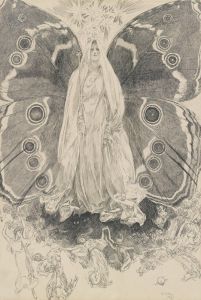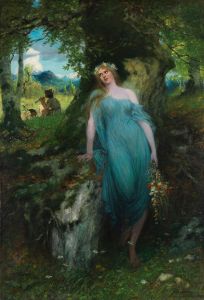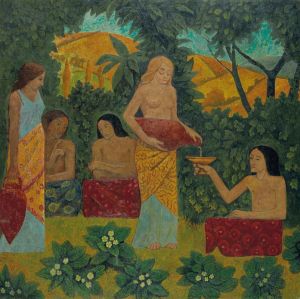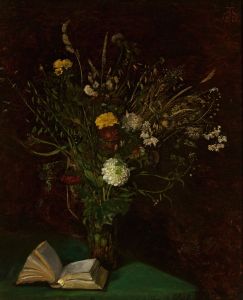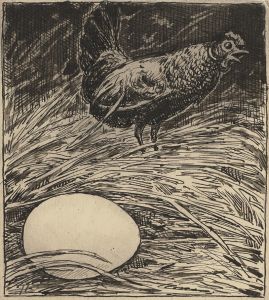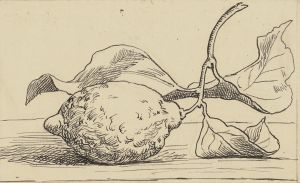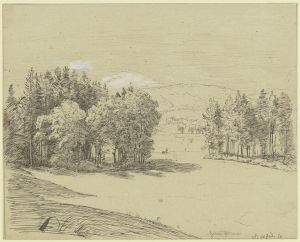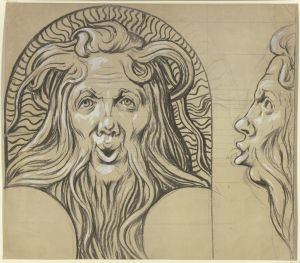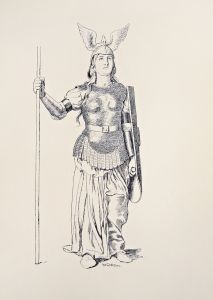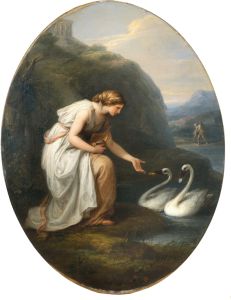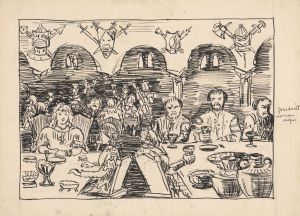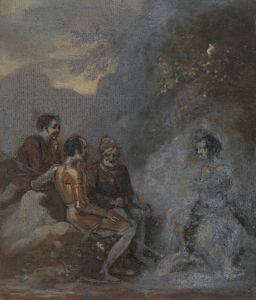
Nymph by a Brook
A hand-painted replica of Hans Thoma’s masterpiece Nymph by a Brook, meticulously crafted by professional artists to capture the true essence of the original. Each piece is created with museum-quality canvas and rare mineral pigments, carefully painted by experienced artists with delicate brushstrokes and rich, layered colors to perfectly recreate the texture of the original artwork. Unlike machine-printed reproductions, this hand-painted version brings the painting to life, infused with the artist’s emotions and skill in every stroke. Whether for personal collection or home decoration, it instantly elevates the artistic atmosphere of any space.
Hans Thoma was a German painter born on October 2, 1839, in Bernau in the Black Forest. He is known for his landscapes and portraits, often imbued with a sense of romanticism and a connection to nature. Thoma's work is characterized by its detailed representation and often idyllic portrayal of the natural world, reflecting his deep appreciation for the landscapes of his native Germany.
"Nymph by a Brook" is one of Thoma's notable works, although specific details about the painting, such as its creation date and current location, are not widely documented. The painting typically features a nymph, a mythological spirit of nature, depicted in a serene and natural setting by a brook. This subject matter is consistent with Thoma's interest in integrating mythological themes with the natural environment, a common motif in his oeuvre.
Thoma's style was influenced by various art movements and artists throughout his career. Early in his life, he was exposed to the works of the Old Masters, which left a lasting impression on his artistic development. His education at the Karlsruhe Academy of Fine Arts further shaped his approach, where he studied under Johann Wilhelm Schirmer, a landscape painter known for his precise and detailed style.
Throughout his career, Thoma was also influenced by the Romantic movement, which emphasized emotion and individualism, as well as a deep appreciation for nature. This influence is evident in "Nymph by a Brook," where the harmonious integration of the human figure with the natural landscape reflects a romanticized view of nature as a place of beauty and tranquility.
Thoma's work gained recognition during his lifetime, and he became associated with the Munich Secession, a group of artists who sought to break away from traditional academic art and explore new artistic expressions. His paintings were exhibited in various art shows, and he received several accolades for his contributions to the art world.
Despite the lack of specific information about "Nymph by a Brook," the painting exemplifies Thoma's broader artistic themes and techniques. His use of color, attention to detail, and ability to convey a sense of peace and harmony in his landscapes are hallmarks of his style. Thoma's work continues to be appreciated for its technical skill and its ability to evoke a sense of connection with the natural world.
Hans Thoma passed away on November 7, 1924, in Karlsruhe, Germany. His legacy endures through his paintings, which remain a testament to his skill and his deep appreciation for the beauty of nature. While "Nymph by a Brook" may not be as widely recognized as some of his other works, it remains an integral part of his artistic legacy, reflecting the themes and styles that define his contribution to the world of art.





